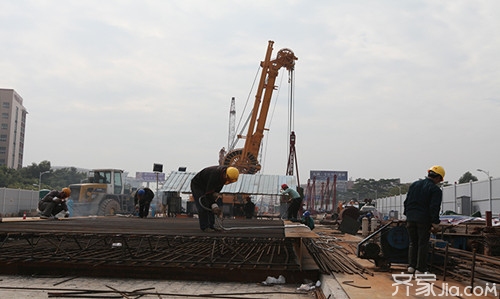The underground diaphragm wall is a distant foundation project using a kind of trenching machinery on the ground. Along the peripheral axis of the deep excavation project, under the condition of mud retaining wall, a long deep groove is excavated. After cleaning the tank, it is suspended in the tank. The steel cage is placed and then the underwater concrete is poured into a unit tank section by a conduit method. This is carried out step by step. A continuous reinforced concrete wall is built underground to serve as a water interception, seepage control, load-bearing, and water-retaining structure. Next, Xiao Bian introduced the function of the underground continuous wall and the operation flow of the underground continuous wall.

Continuous wall effect
1, pumping station, pool
2, building foundation pit
3, underground oil depots and warehouses
4, municipal pipe ditch and culvert
5. Shafts for shields and other projects
6, a variety of deep foundations and piles
7, docks, revetments and dry docks
8. Cutoff walls for water conservancy and hydropower, open-pit mines and tailings dams (pools) and environmental protection projects
9. Underground structures (such as underground railways, underground roads, underground parking and underground streets, shops, underground substations, etc.)

Underground continuous wall operation flow
1. Guide wall
The guide wall is usually an in-situ reinforced concrete structure. The main role is: to ensure the geometric size and shape of the design of the diaphragm wall; to accommodate part of the mud, to ensure that the liquid level is stable when the groove construction; to withstand the load of the trenching machinery, protect the soil wall of the slot does not damage, and as the installation of steel frame Benchmarks. The guide wall depth is generally 1.2 to 1.5 meters. The top of the wall is 10-15 cm above the ground to prevent surface water influx and affect the quality of the mud. The bottom of the guide wall cannot be located in the loose soil layer or the fluctuation of groundwater level.
2, mud retaining wall
The slurry is applied to the walls of the tank to protect the shape of the deep groove that was excavated, and the poured concrete replaces the mud. Slurry materials are usually composed of bentonite, water, chemical treatment agents and some inert substances.
The role of mud is to form impervious mud on the walls of the tank, so that the hydrostatic pressure of the mud effectively acts on the walls of the tank to prevent the seepage of groundwater and the spalling of the tank walls and to maintain the stability of the wall. At the same time, the mud also has suspended soil. Slag and the ability to carry earth slag out of the ground.
3, groove construction
The special machines used in China for slotting include: rotary cutting multi-head drills, guide plate grabs, and impact drills. The construction should consider the geological conditions and the depth of the wall selection. General soft soil, when the depth is about 15 meters, you can use ordinary guide plate grab; for dense sand layer or pebble layer can use multi-headed drill or aggravated hydraulic guide plate grab; in large particles containing gravel or rock foundation In the slot, the choice of impact drill is appropriate. The unit length of the tank section is generally 6 to 8 meters, usually combined with the soil conditions, the weight of the steel frame and the structural dimensions, the division of the paragraph and so on. After standing in the tank, it needs to stand for 4 hours, and make the mud weight in the tank less than 1.3.
4, submerged concrete
The method of underconcreting is performed by the conduit method, but in order to prevent the mud from mixing into the concrete before starting the pouring of the concrete with the conduit, a pipe plug can be suspended in the conduit and the slurry in the pipe can be extruded by the concrete pressure poured thereinto. The concrete should be continuously poured and the concrete pouring volume and height should be measured. The spilled mud was returned to the slurry tank.
5, wall section joint processing
The underground continuous wall is formed by assembling many wall sections. In order to maintain the continuous construction between the wall sections, the joint adopts the lock pipe process, that is, a hole and slot are pre-inserted at the end of the slot section before pouring the concrete in the slot section. Equally wide steel pipes, that is, locking pipes, will be pulled out after the initial setting of the concrete, so that the ends form a half-concave joint. There are also rigid joints that are designed to withstand the forces required by the wall structure so that the two wall sections are integrated.
Editor's summary: The role of the underground continuous wall and the operation process of the underground continuous wall are introduced here. I hope to help everyone. If you want to know more related information, you can pay attention to this website information.
Living room glass partition wall balcony wall decoration loft bedroom partition wall model sofa wall background wall wall hanging bookshelf